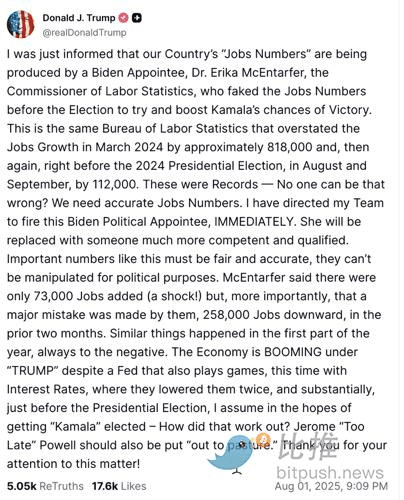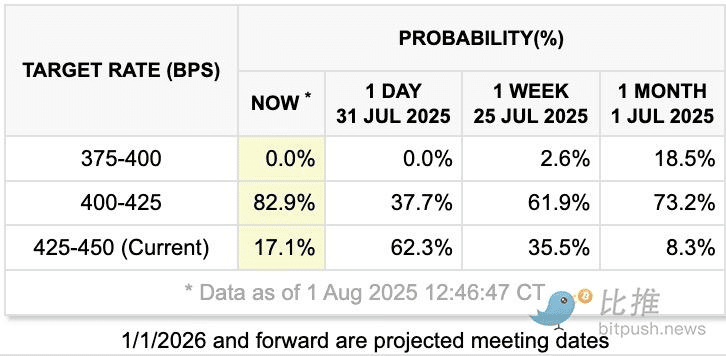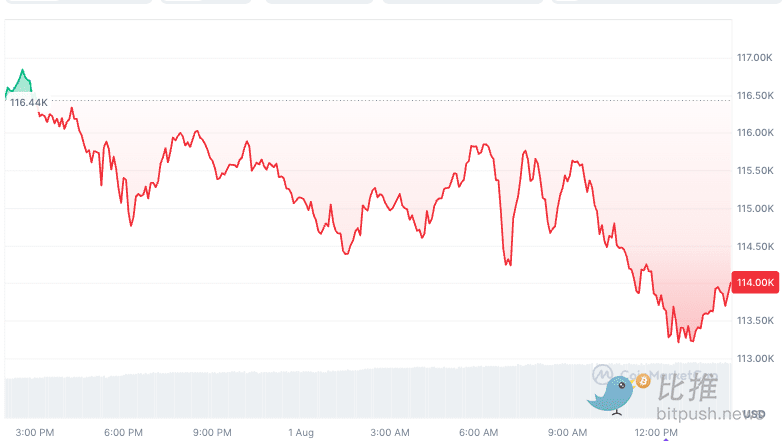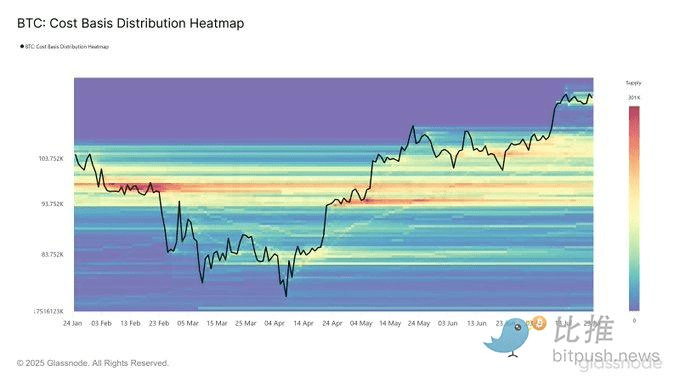Written by: Bitpush
July 2025 is a carnival month in the crypto world. Bitcoin surged past the $120,000 mark; Ethereum led the market with an astonishing increase of over 49%, and its spot ETF attracted over $5 billion in just one month, with total inflows nearing $10 billion. Market confidence is booming, bullish sentiment is at an all-time high, seemingly heralding an unstoppable bull market on the way.
However, this upward trend encountered headwinds in early August, as the 'triple black swan' caused the market to quickly switch from a 'risk-on' mode to a risk-averse state, with CME Bitcoin futures premiums turning negative, leading to a significant withdrawal of funds from high-risk assets.
Negative 'triple whammy': The trigger for market panic
This market crash is not coincidental, but rather the result of a series of high-level macro events erupting in a very short time. These events collectively gave rise to investors' 'risk aversion' sentiment.
1. New tariff policy: Reignition of the global trade war
On July 31, local time, U.S. President Trump signed an executive order announcing new reciprocal tariffs on imported goods from multiple countries, with rates ranging from 10% to 41%. This policy quickly raised market concerns about intensified global inflation. Investors generally believe that tariff barriers will push up commodity prices, potentially forcing the Federal Reserve to maintain a tough stance on interest rate cuts, which is undoubtedly a clear negative for risk assets that rely on loose liquidity.
2. Poor employment data and political storm
Shortly after the tariff policy was announced, the U.S. Department of Labor released employment data that fell far short of market expectations. This weak economic signal was sufficient to make investors uneasy. More dramatically, President Trump expressed extreme dissatisfaction with this data and fired U.S. Labor Secretary Erika McEntarfer within hours of the report's release.

This politically charged move further amplified market panic, shrouding the economic outlook in a thick layer of uncertainty.

Traders reacted to the employment report by significantly increasing bets on a rate cut in September: As of the time of this writing, CME FedWatch data shows that the probability of the Federal Reserve lowering the target rate to 4.00-4.25% is nearly 83%, up from 37.7% the previous day.
3. Nuclear submarine deployment: Geopolitics
Regarding geopolitical risks, Trump ordered the deployment of two nuclear submarines to the corresponding areas near Russia. This tough military action is a direct response to 'provocative remarks' made by a senior Russian official.

In the shadow of the Russia-Ukraine conflict, this level of geopolitical tension escalation has made global investors uneasy. Seeking safe havens has become a top priority, and as a high-volatility asset, cryptocurrencies have naturally become the target of sell-offs.
Liquidation storm
Under the bombardment of negative news, cryptocurrency prices fell sharply, triggering a chain reaction. Bitcoin dropped over 3% in one day, hitting as low as $113,231; Ethereum and Solana suffered even more severe declines of 6% and 5%, respectively. XRP also did not escape, with losses exceeding 10%.

The sharp drop in prices quickly triggered the 'domino effect' in the derivatives market. According to CoinGlass data, over $940 million in long positions were liquidated in the crypto market in the past 24 hours, with long liquidations accounting for the vast majority at $860 million.
Cryptocurrency concept stocks have faced even more severe blows, with declines exceeding that of the crypto assets themselves. This reveals the market's dual concerns about such companies during risk-averse periods: worries about the macro economy and concerns about their business fundamentals.
Coinbase: After announcing second-quarter financial results that were below expectations, its stock price plummeted by 16%. Although its core trading business performed poorly, the significant drop in its stock price also reflects the collective panic of investors in the face of market uncertainty.
Strategy: As a well-known 'proxy stock' for Bitcoin, its stock price fell by 8.7%, highlighting the market's vulnerability towards such highly leveraged assets.
Other crypto companies like Circle and Galaxy Digital have also suffered heavy losses in stock prices, indicating that any minor disturbance in the crypto market will be magnified and transmitted to the traditional financial markets through the stock prices of listed companies. The yield on the 10-year U.S. Treasury bonds plummeted by 14 basis points to 4.22%, while gold prices rose by 1.5% to $3,400 per ounce, returning to historical highs.
Is it a 'healthy correction' or a 'risk warning'?
Faced with market declines, analysts' views have diverged.
Ben Kurland, CEO of the crypto research platform DYOR, holds an optimistic view, defining this decline as a 'healthy and strategically significant cooling period.' He pointed out that after the 'red hot' July, the market is undergoing a 'planned pause,' with funds flowing from the most speculative and unstable asset classes to safer havens. In his view, this is not a 'crisis,' but a rational response to the lack of new crises.
However, some analysts have expressed caution. They believe that the macro drivers behind this decline are complex and difficult to predict. Some analysts predict that considering historical patterns and current macro uncertainties, Bitcoin prices may continue to be under pressure in August and September, potentially dropping to $80,000, with a turnaround only expected in the fourth quarter.
Glassnode analysts predict that if Bitcoin's price falls below $110,000 after a recent surge, it could trigger an acceleration of sell-offs.

Except for the year after the halving, August is usually a relatively sluggish month in Bitcoin's history. The frenzy of July ultimately requires the calm of August to digest. Is this severe market turbulence a healthy profit-taking or a warning of a bigger storm? Perhaps the market can find a new direction only after digesting all the negative news.



